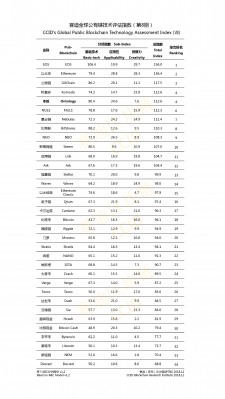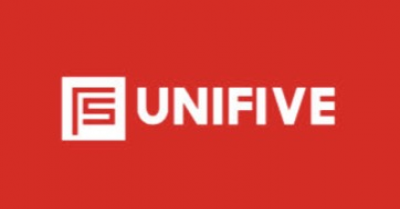China CCID's 8th Issue of Global Public Blockchain Technology Assessment Index: EOS, Ethereum, and GXChain Stay in Top-Three, While Bitcoin is at 18th

BEIJING, December 21, 2018 (Newswire.com) - China’s Center for Information and Industry Development (CCID), under the Country’s Ministry of Industry and Information Technology, announced a new update of its Global Public Blockchain Technology Assessment Index (GPBTAI) on Dec 20, 2018. This is the Center’s 8th update. EOS topped the list with a total score of 156.1 points. Ethereum ranked second, with an assessment index of 136.4. The two indexes are still the lead at the very top. GXchain replaced BitShares in third place with a score of 117.5 in this assessment, while BitShare fell by five in the current evaluation, ranking eighth. Komodo, Ontology, NULS, Nebulas, BitShares, NEO, and Steem shared the fourth through 10th spots. Bitcoin evaluation index stayed in the middle of the list with a score of 96.1, ranking 18th.
Ontology, a new addition in this assessment, is a new generation of high-performance public blockchain and distributed trust collaboration platform independently developed by the ontology technology team, supporting a complete distributed ledger network and intelligent contract system. Based on the new VBFT consensus algorithm, the ontology public chain can issue blocks on demand to achieve second-level confirmation of transactions. Its main network was launched in June 2018. In this assessment, Ontology has outstanding performance in basic technology and application, with a composite index of 112.6, ranking 4th in the list.
The index of this issue presents two outstanding features. First, public blockchains with high performance and support for general application development are generally ranked high. Among the top 10, four public chains adopted graphene architecture with better performance, six public chains use the dPOS consensus mechanism, and seven public chains support Dapp development. Second, the “new generation” public chain has outstanding achievements. Four of the top 10 chains are public chains newly launched on the main network in 2018. From the specific index, NULS, Komodo, GXchain, Waves, and Zcash are the ones that have made rapid progress. The NULS main network was upgraded in November, and the new main network can support the development and deployment of smart contracts. Compared with the previous index, the average of the composite index increased by 2.5.
Technology
In terms of basic technology, the top five are EOS, BitShare, Steem, GXChain, and Ontology. From the perspective of rank changes, NULS has jumped up rapidly. Statistics show that the average of the basic technology index has increased slightly from the previous period. Basic technology mainly examines the technical realization level of the public chain, including function, performance, security, and decentralization.
Application
The top five applications are Ethereum, NEO, Ontology, Nebulas, and Qtum. Ontology jumped in and replaced Dash into the top 5. Similar to the basic technology index, NULS application index improved rapidly with the update of the main network. Statistics show that the average application index is slightly increased compared with the previous period too. Applicability mainly evaluates the comprehensive level of public chain support for practical applications, including node deployment, wallet application, development support, and application implementation.
Innovation
Compared with the basic technology and applicability, the innovation index undergoes a big change based on the update of the public chain code. The index shows that the top five are Bitcoin, EOS, Ethereum, Komodo and Cardano. Compared with the previous index, the public chains with the largest increase in the innovation index are Komodo, Sia, GXchain, Bytecoin, and Nebulas. Among them, Komodo's code update data was re-calculated, and the reference data of Sia was transferred from Github to Gitlab. Innovation focuses on continuous innovation in the public chain, including developer size, code updates, and code impact.
Source: China's Center for Information and Industry Development
